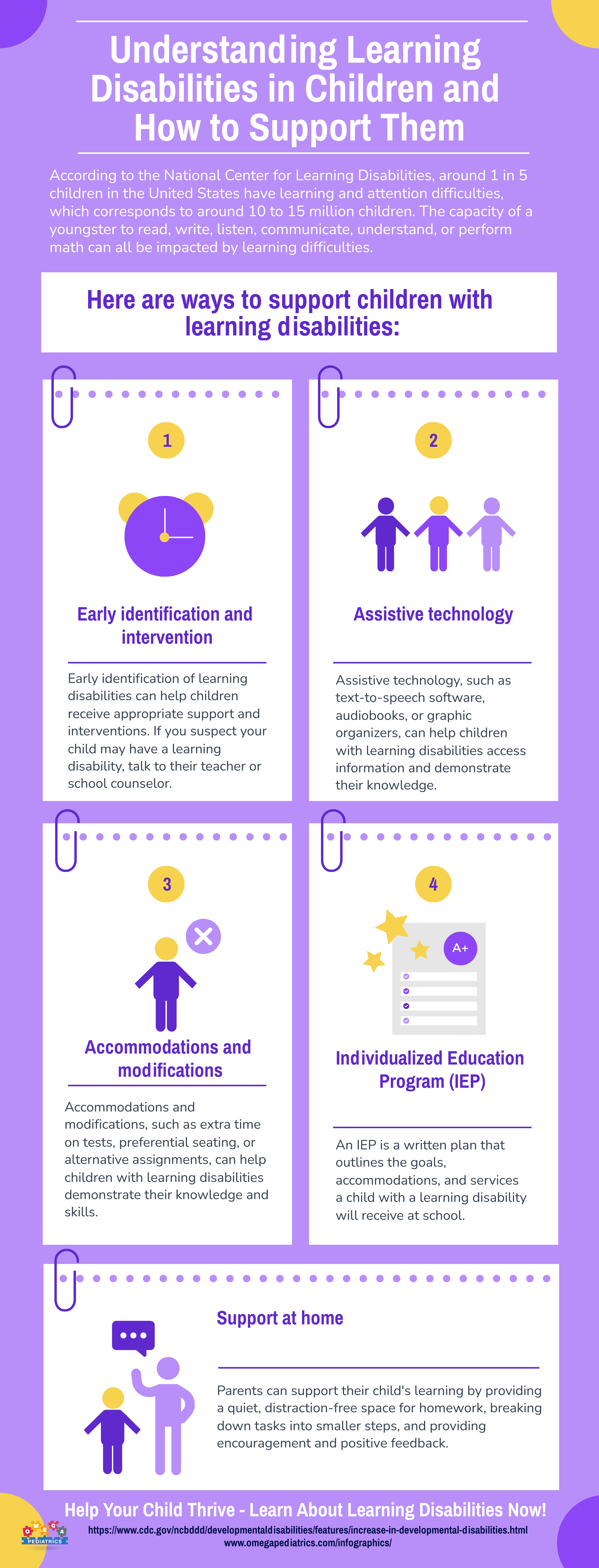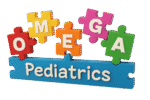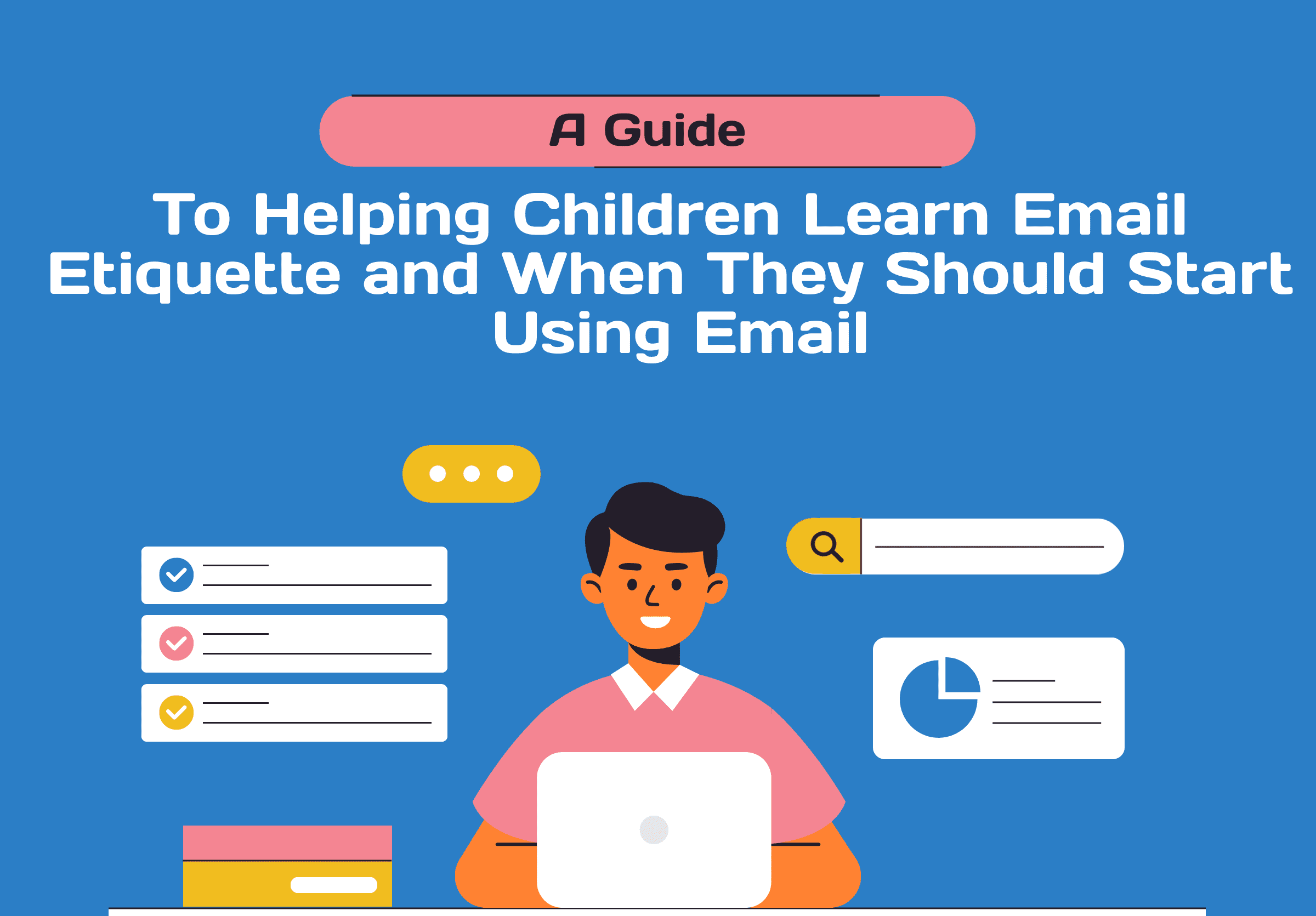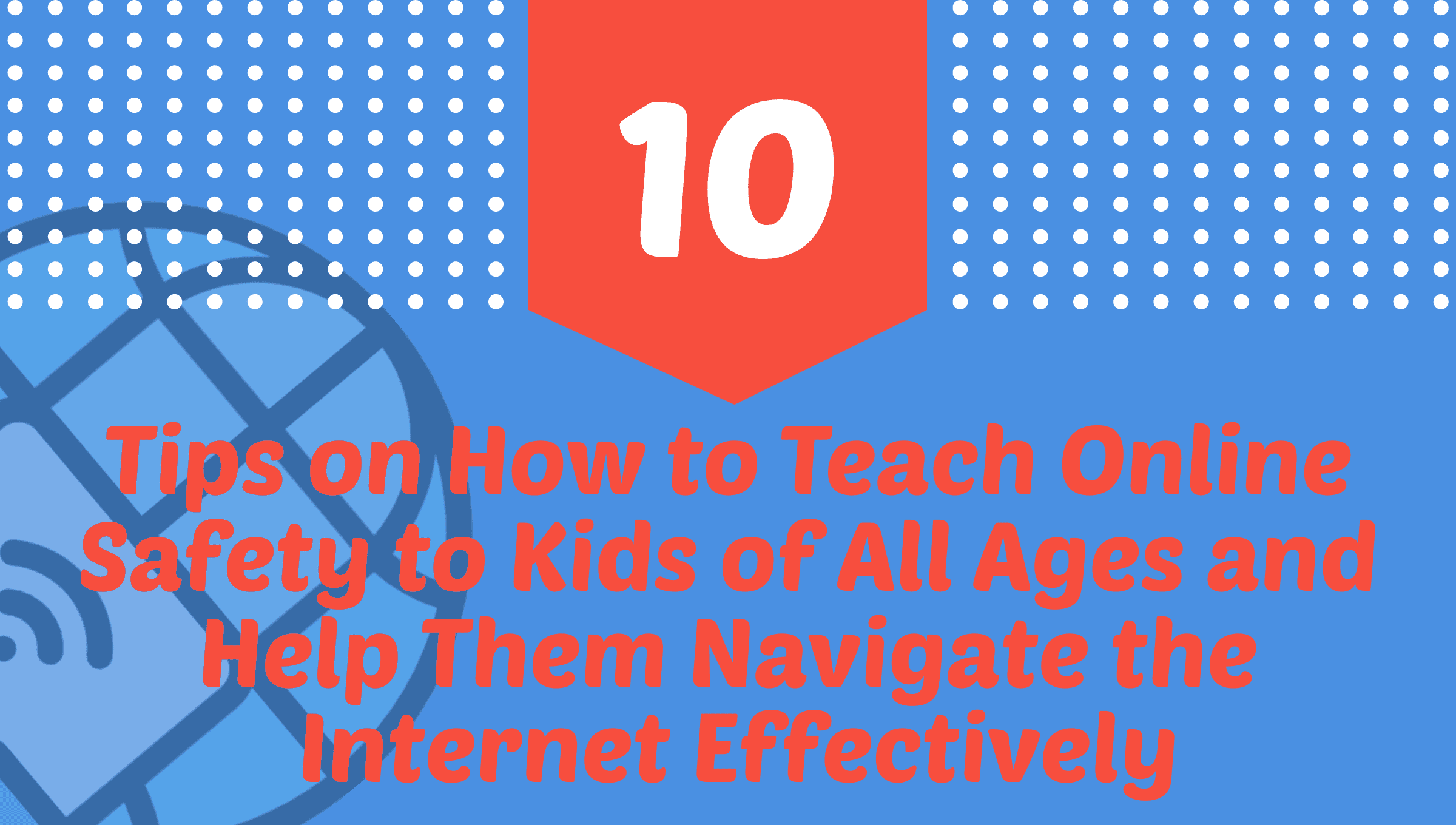
According to the National Center for Learning Disabilities, around 1 in 5 children in the United States have learning and attention difficulties, which corresponds to around 10 to 15 million children. The capacity of a youngster to read, write, listen, communicate, understand, or perform math can all be impacted by learning difficulties.
Here are ways to support children with learning disabilities:
- Early identification and intervention: Early identification of learning disabilities can help children receive appropriate support and interventions. If you suspect your child may have a learning disability, talk to their teacher or school counselor.
- Assistive technology: Assistive technology, such as text-to-speech software, audiobooks, or graphic organizers, can help children with learning disabilities access information and demonstrate their knowledge.
- Accommodations and modifications: Accommodations and modifications, such as extra time on tests, preferential seating, or alternative assignments, can help children with learning disabilities demonstrate their knowledge and skills.
- Individualized Education Program (IEP): An IEP is a written plan that outlines the goals, accommodations, and services a child with a learning disability will receive at school.
Support at home
Parents can support their child’s learning by providing a quiet, distraction-free space for homework, breaking down tasks into smaller steps, and providing encouragement and positive feedback.



